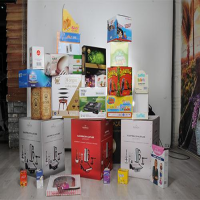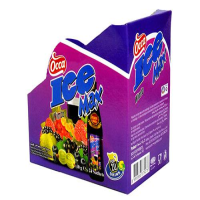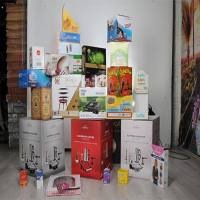
ATEŞLER AMBALAJ SANAYİ VE TİCARET ANONİM ŞİRKETİ
Istanbul / Türkiye
Corrugated Box
Cardboard Parcels and Boxes are put into production in order to provide strength and ease of transportation after the corrugated wave type and cardboard type and density are determined by considering the type, weight and strength requirements of the material to be transported. These cardboard boxes or boxes, in which the products are placed and used after they are packed with film, foil or box packaging, are very important in terms of product protection, ease of transportation and storage, and brand emphasis. Corrugated Cardboard Parcels and Boxes are produced using 100% recyclable materials. The strength values of the cardboard box vary according to the following mechanical wave properties. In order to obtain the desired strength properties with corrugated waves, the corrugated layer can be selected as one or two layers. Linerboard Testliner, used as the carrier of the corrugated sheet, is the name given to the inner and outer paper based on recycled paper. The upper surface may be of different materials in white or brown tones. In Europe, this article is called Wellenstoff. Linerboard Kraftliner; The first cellulose-based product was the name given to the carrier made of paper. By definition, it consists of obtaining more than 80% of its fibers by applying the chemical sulfate or soda. Imitation products are also available. White faced or brown faced productions are available. Straw Paper Fluting, which is prepared using a mixture of straw and recycled paper, is used in making waves. NSSC (Neutral Sulfite Semi Chemical) Fluting wave, which has been specially treated for cold storage products, is used as moisture and heat resistant. More than 65% of its fibers must be obtained by semi-chemical treatment from unbleached hardwood fibers. The quality of liner papers is controlled by BST Burst Tests, and Fluting papers are controlled by CMT Surface crush tests. Kraftliner papers have higher burst strength than Testliner. The box shapes and types that can be made according to the design are also unlimited. Below you can find examples of the most used box types. standard box. The upper and lower eyelids meet in the middle half of the surface. Box with full lid. Top and bottom covers completely cover the surface and make a double-layer closure. Box with overlay lid. Top and bottom covers are applied with overlapping longer than half of the surface. Half Box with Bottom Standard Lid. Only the caps on the lower part converge in the middle half of the surface. Center-closed full-lid box. The upper and lower flaps meet in the middle half of the surface, the width and height are different lengths on both sides, the cap lengths meet in the middle. Snap Box. It can be single wing at the top, the wing can be locked or unlocked with ear snaps on the side, full closure at the bottom or manual closure by special cut or automatic gluing. Telescope or Tray Boxes. They are two-piece boxes that cover each other as two parts, the bottom and the outer cover. There are different models in which the lid completely covers the box or the lid is used only as a snap fastener. Double-sided outer coating can also be used. Fixed Base Collapsible Box. They are boxes that are folded by turning around fixed-based products. It is a widely used model with its 5-sided folding feature. There are also models that can be opened and locked from the sides. Cardboard boxes are also printed in one or more colors to indicate the contents of the box, its manufacturer, the manufacturer of the box, and specifically the barcode information of the product being distributed. Corrugated Cardboard Boxes; In addition to being an environmentally friendly sustainable material, it is an important packaging material that is highly preferred due to its durable, multi-purpose, light, specially designed and protective properties. One of the standard-setting bodies for corrugated boxes, FEFCO European Federation of Corrugated Cardboard Manufacturers has set many box drawings and design specifications.






